TAK’ALIK AB’AJ a look back through time and space
In the beginning, so long ago it no longer can be remembered, all was peaceful. There was abundant space to gather food and hunt, goods were traded fairly, air and water were pure, children could run and shout and explore.
But one day signs appeared in the neighboring valley that indicated “No Trespassing.” Soon the fertile hill just beyond had a warning, “Violators will be Prosecuted.” And finally, a new sign announced, “Private Property, Keep Out.”
This was a time when the harvest had to be supplemented by cultivating the earth and planting seeds. For this, the area had to be protected, lawyers had to settle the disputes, towns had to be organized, committees to be appointed. That was the day a group of Maya farmers climbed the mountain, seeking unoccupied space to cultivate plots of maize, cacao groves and wild cotton and to hunt for high forest game in this rugged land surrounded with deep barrancas where only one section could be crossed and guarded. So it was, that on this day, some 3,000 years ago, they left the coastline shores, struggled through the forests and found the perfect area to settle on the Pacific Coast, on the slopes of the mountains flanking the Ocosito River. This place is called Tak’alik Ab’aj.
Today the ruins slumber in higher dimensions, the silence broken by rustling leaves that whisper of unwritten histories. Nebulous shadows call from an extinguished creation, distant voices enter in evanescent shreds that ascend above the high forest and dissolve in the sky where celestial bodies revolve in cycles of time without cease, while life below recreates anew. Archaeology seeks these unknown worlds, discovering carefully, thoughtfully, patiently, revealing the paradox that time is eternal, yet it finishes.
As in earlier times, the traveler enters the site, his footsteps muffled by the sodden forest floor, eroded and worn from repeated use and damp from the morning rain. He passes Structure 12 with its stately row of sculpted images, their expressions frozen in ancestral time. They beckon from the site, a grinning alligator, an amorphous amphibian, a corpulent toad, water-loving images of nature that accompanied the first settlers arriving from the coastal shores.
Moving forward into the past in this space/time journey, the traveler encounters the Olmec period, the sculpted leaders presented in celestial jaguar attire or emerging from monster jaws. Proceeding farther in space in the archaeological past at the site, the traveler observes a Maya serpent uncoil on Stela 13. Not far distant, on Altar 48, a king is carried by a turtle swimming in the vast waves of the universe, as the traveler is carried toward new horizons back in space/time.
The traveler passes an observatory that once allowed curious eyes to study the star-dotted vault at night. At dawn another platform (Alter 46) exposed the rising sun at solstice, while nearby a shadow-stick silently marked the hours and days of eternity. Here the early astronomers followed the patterns of the celestial cycles, recording day counts to predict the rains, forever counting the days and hours and years, tracking time of lifetimes, recording histories and passing events.
Here began the Maya group who settled on the mountain slopes, they leveled the terrain to form terraces to sustain and build the community. The administration was placed at the center, to manage the members, to organize the production a nd harvest maize, cacao, and fruit trees. The trade connected the Highlands and the coast through intricate networks for, politically and economically, the center regulated the area through commerce along the coastal route with detours to strategic markets placed at high mountain crossings.
In the initial stages at Tak’alik Ab’aj, the Olmec managed the trade, a group associated with a divine jaguar that gave inspiration to its worshippers. Vestiges of monumental creatures are scattered about the ruins of the site. Some centuries later, about 500 B.C., the Maya celestial serpent, superior to the jaguar in knowledge, took control and a new regime was born. In time the Olmec monuments eroded under the rains while Maya sculptures announced the more advanced developments.
Another radical change ensued in the history of Tak’alik Ab’aj, around 100 A.D. The celestial serpent weakened and the jaguar, aided by the sun, returned to the people. Stela 5, in front of Structure 12, announces the shift of power at the site; soon afterward production and trade increased and the center flourished. However, its prosperity was interrupted, about 1,000 A.D., by the violent conquest by highland groups. The end was sudden and the site was abandoned. Where the residents fled is not known, although there are clues that they headed northeast, toward the high Cuchumatanes Mountains.
The reports are silent regarding the final space/time dimension of Tak’alik Ab’aj. The traveler today can find a place behind Structure 12, where one can sit next to the great toad. This reptilian monument rests, looking up to the sky as he has for 3,000 years, silently, patiently. He is the product of space/time and from these depths he can tell you of many things. If you sit quietly, unhurriedly, and listen and wait, you will hear no words but gradually, imperceptibly, he will impart to you his wisdom.
The Archaeological National Park Tak-alik Ab’aj is part of the General Directorate for Culture and Natural Heritage and Ministry of Culture of Sports.
The research and development of the park since 1987 is being made with the support and on behalf of this institution. Official website
REVUE magazine article by Dr. Marion Popenoe de Hatch, photos by Kerstin Sabene.
For more information about Tak’alik Ab’aj, visit www.takalikabajpark.com and info@takalikabajpark.com
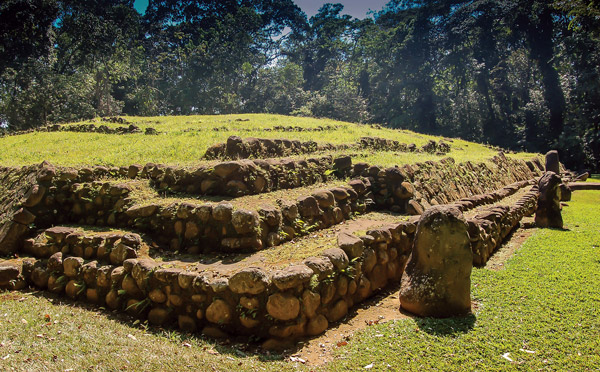
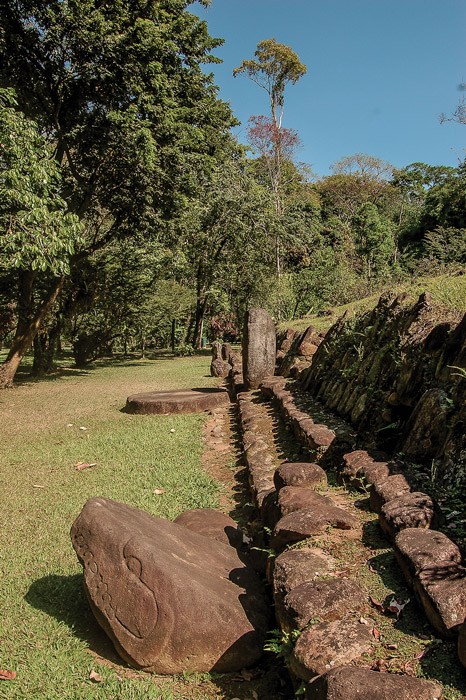
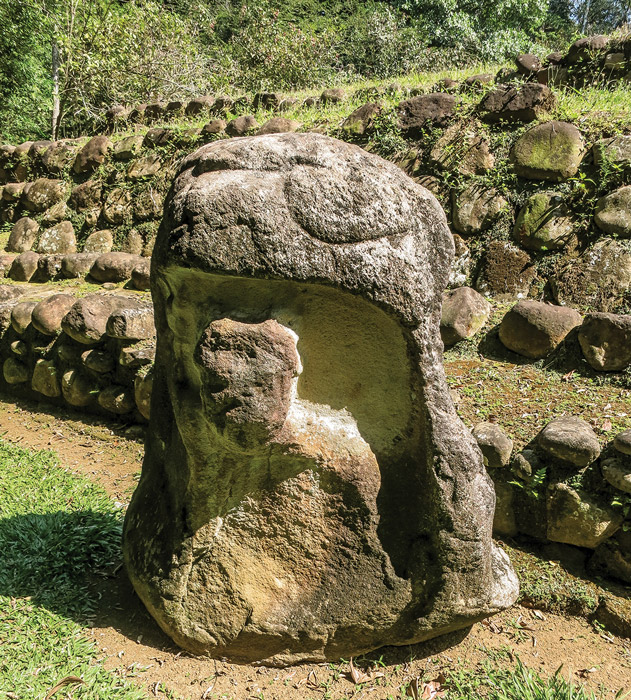
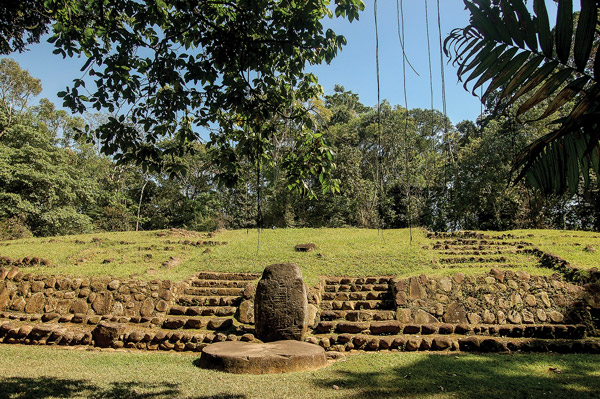
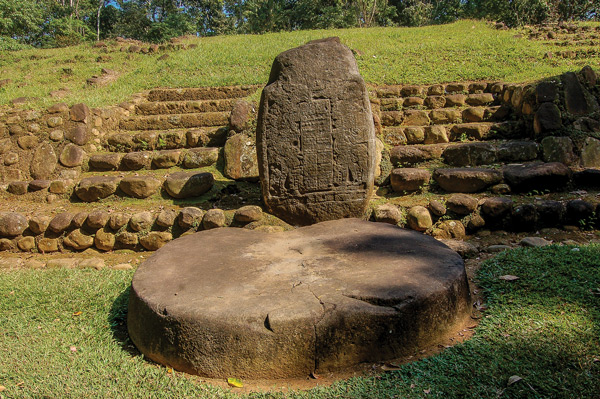
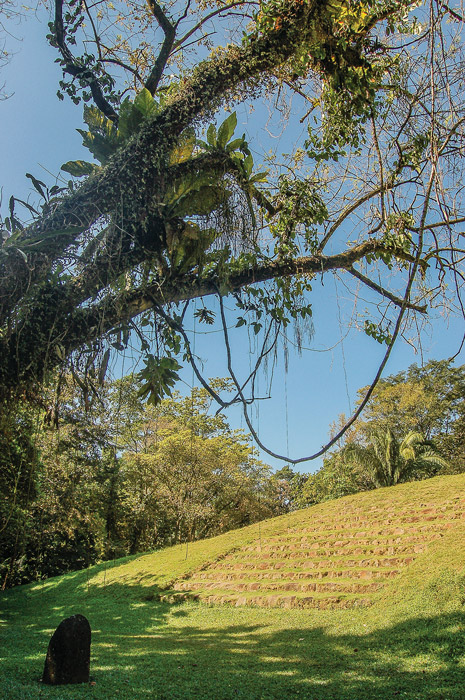
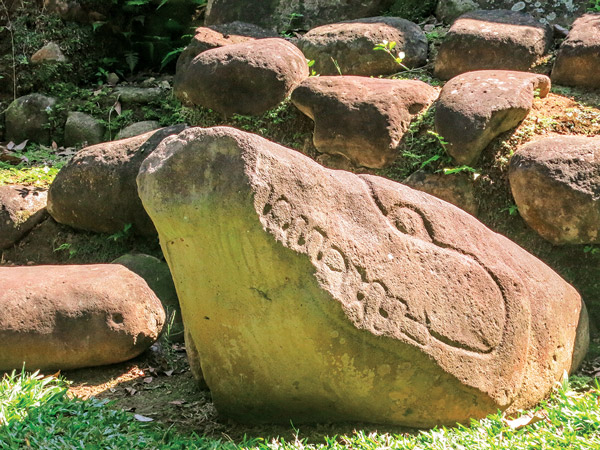
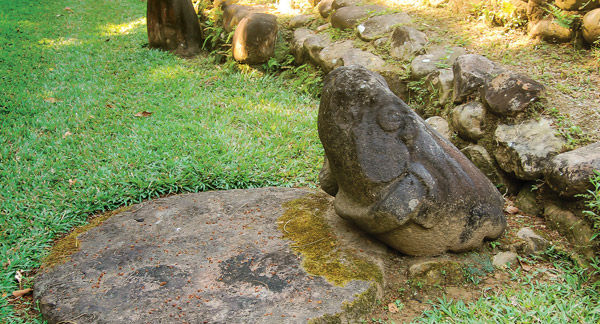
I had the pleasure of being a part of a group visiting TAK’ALIK AB’AJ with Marion as our tour master. This was one of the most enjoyable outings I have had in Guatemala, and then to have the opportunity to then have Ms. Hatch give our group a guided tour of her historic home here in Antigua made it all the more special.
Could you give me contact info for Marion or the company she works for.
Thanks for your reach out Tim. Is this in regard to the site itself? If so, I’ve already requested an email contact. I’ll be back with you about that as soon as I can.
Marion is a university professor (Guatemala, chairs the archaeology dept) and she also participates in research at the site ~ for any all and all info.> takalikabajreu@gmail.com
Thanks for reading the Revue!